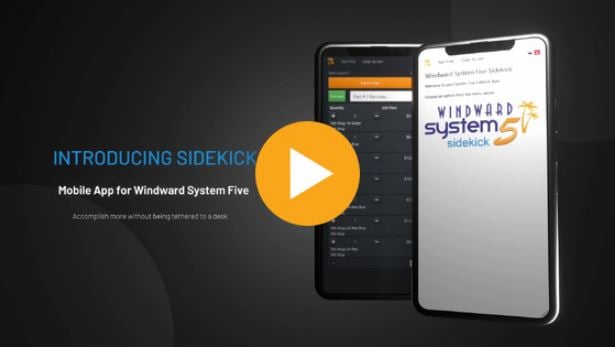Get Parts that have changed
Use of the Inventory/InventoryChanges end point provides additional filtering and will have fast performance depending on your inventory mix. Filters such as the eCommerceExport and PageNumber can allow pagination of the data being returned to reduce payload sizes. This will save a developer time of not having to parse full records of inventory to then filter and decide what has changed.
A change in an inventory record could be any change, editing an inventory record in any way will trigger the changed state flag to be set. That includes Quantity, Price, Description or any other field in the inventory record. This can return many inventory items to further parse and filter.
Sample call requesting the first 100 inventory filtered by ecommerce and last update data. http://127.0.0.1:8080/Windward/WebAPI/Inventory/InventoryChanges?EffectiveDate=2019-01-01&eCommerceExport=Y&PageSize=100
Sample Inventory Pseudocode
- Get list of Inventory/InventoryChanges filtered by what is listed for ecommerce export and last updated date
- For each inventory returned
- If additional field information is required /Inventory/{InventoryId}
- If image required TServerMethodsWebAPI/PartImages_Fetch
- Update inventory of online shopping cart
This is a sample Inventory/InventoryChanges JSON result that meets filtered criteria. These results have been formatted with hard returns to make it easier to read.
{"Inventory":[{"InventoryId":1,"InStock - Dept[1]":0,"InStock - Dept[2]":0,"InStock - Dept[3]":0, "StartSaleDate - Dept[1]":"M\/d\/yyyy","EndSaleDate - Dept[1]":"M\/d\/yyyy", "StartSaleDate - Dept[2]":"M\/d\/yyyy","EndSaleDate - Dept[2]":"M\/d\/yyyy", "StartSaleDate - Dept[3]":"M\/d\/yyyy","EndSaleDate - Dept[3]":"M\/d\/yyyy", "Prices":[{"Regular List":0,"Sale List":0}]}, {"InventoryId":2,"InStock - Dept[1]":50,"InStock - Dept[2]":0,"InStock - Dept[3]":0, "StartSaleDate - Dept[1]":"M\/d\/yyyy","EndSaleDate - Dept[1]":"M\/d\/yyyy", "StartSaleDate - Dept[2]":"M\/d\/yyyy","EndSaleDate - Dept[2]":"M\/d\/yyyy", "StartSaleDate - Dept[3]":"M\/d\/yyyy","EndSaleDate - Dept[3]":"M\/d\/yyyy", "Prices":[{"Regular List":6,"Sale List":3}]}, {"InventoryId":3,"InStock - Dept[1]":50,"InStock - Dept[2]":0,"InStock - Dept[3]":0, "StartSaleDate - Dept[1]":"M\/d\/yyyy","EndSaleDate - Dept[1]":"M\/d\/yyyy", "StartSaleDate - Dept[2]":"M\/d\/yyyy","EndSaleDate - Dept[2]":"M\/d\/yyyy", "StartSaleDate - Dept[3]":"M\/d\/yyyy","EndSaleDate - Dept[3]":"M\/d\/yyyy", "Prices":[{"Regular List":1.05,"Sale List":0.52}]}], "APIResponse":{"IsSuccess":true,"Response":"","ElapsedTime":"00h:00m:00s:137ms","RecordCount":"3"}}TServerMethodsWebAPI\Get_Part_Changes
The TServerMethodsWebAPI/Get_Part_Changes returns the list of Part Unique numbers that have changed since the Effective Date. It translates inside the API using an XML DOM which has a known memory and performance impact.
TServerMethodsWebAPI\Get_Parts
This endpoint returns pricing data that can cause confusion in developers around sale pricing.
- If your dataset has the department features enabled, we allow different sale dates to be defined in each department. This method returns the value of a single department only.
It is recommended that you use Inventory/Inventory/{InventoryID} to obtain information including sales dates for all departments in the JSON payload.
TServerMethodsWebAPI\Get_Part_Prices
When requesting pricing with a date that is outside a sales date set, the endpoint will return IsOnSale as false with the sales price set to the regular sales price.
It is recommended that you use Inventory/Inventory/{InventoryID} to obtain inventory information.
Back to WebAPI Samples




